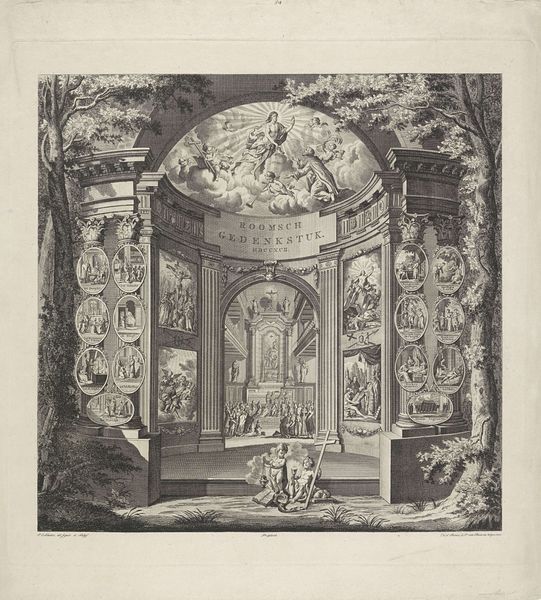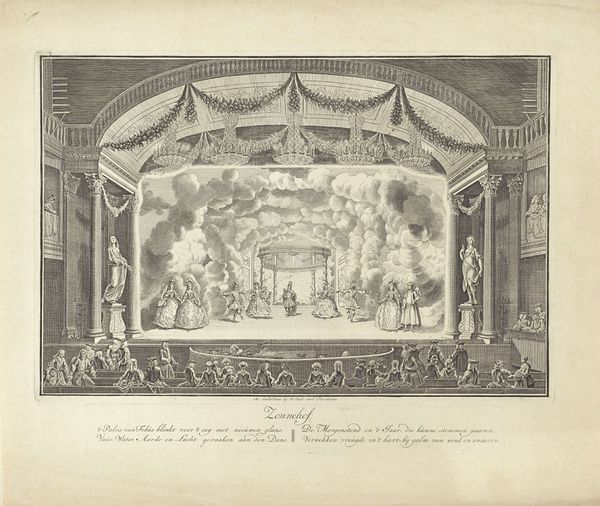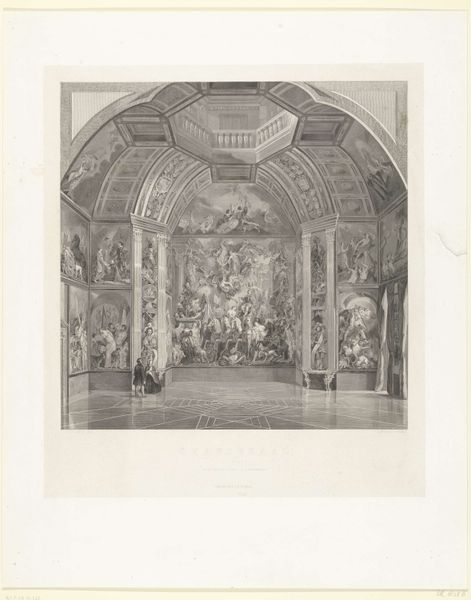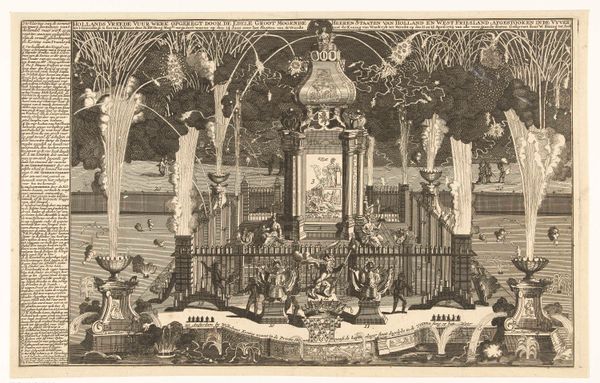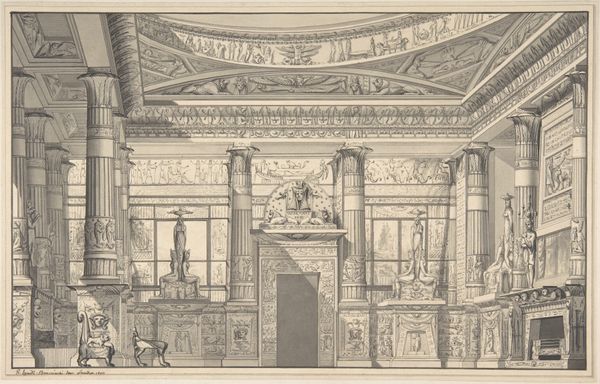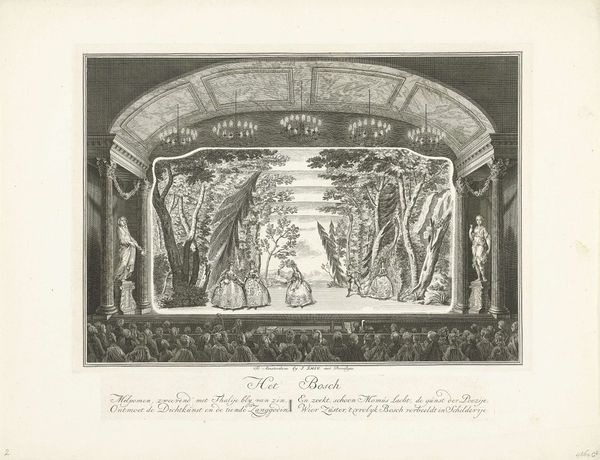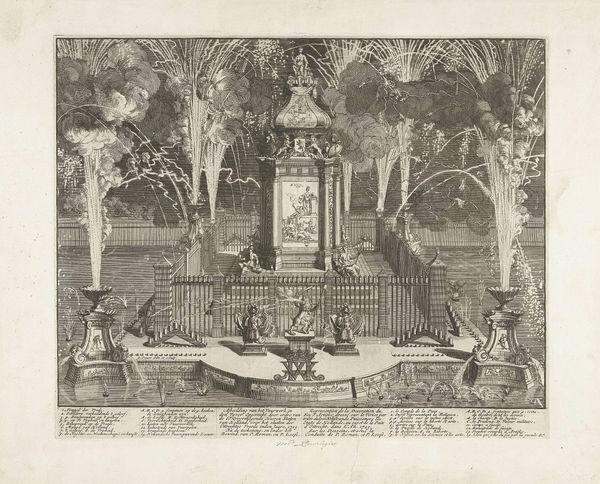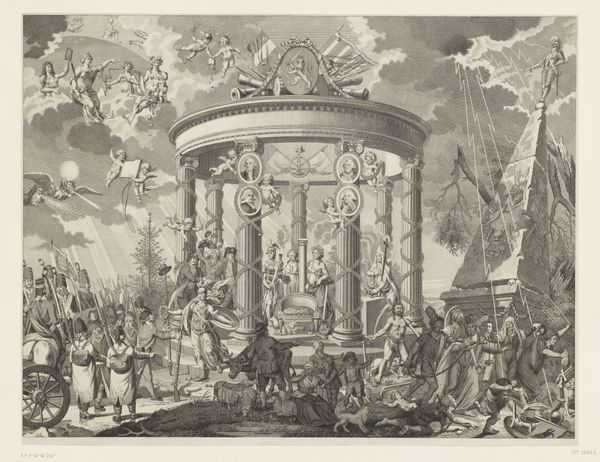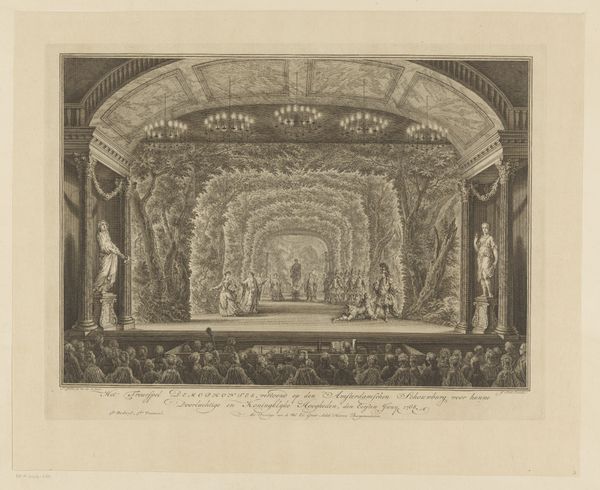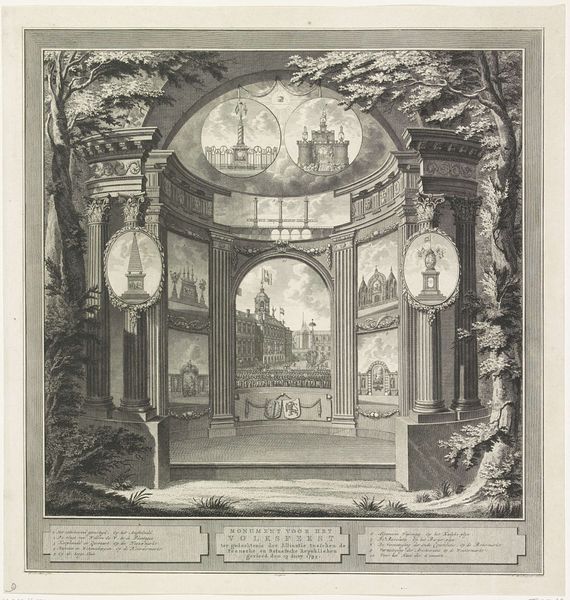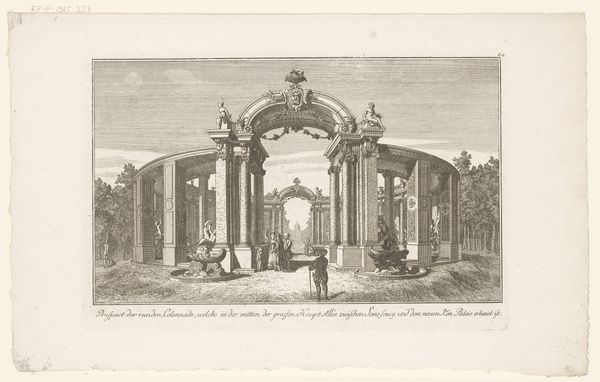
Dimensions: height 475 mm, width 468 mm
Copyright: Rijks Museum: Open Domain
Cornelis Brouwer created this print, "Monument voor de Doopsgezinden," using etching, a process dependent on acid. Etching has a rich history that highlights the democratization of image production. In this method, the artist covers a metal plate with a waxy, protective layer, then scratches an image into it. Immersed in acid, the exposed lines are eaten away, creating grooves that hold ink. The plate is then pressed onto paper, transferring the design. The beauty of etching lies in its accessibility; it doesn't require the immense strength of engraving. The acid does the hard work, which made etching popular among artists wanting to reproduce their designs widely. Here, the fine lines achieved through etching allow for meticulous details, capturing the essence of the Doopsgezinden. By understanding the social and technical processes behind this print, we appreciate how the medium democratized art and amplified diverse voices, marking a shift from exclusive craftsmanship to broader cultural engagement.
Comments
No comments
Be the first to comment and join the conversation on the ultimate creative platform.
